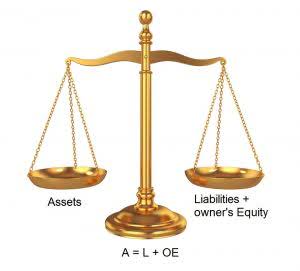Business Cash Flow Problems A Major Cause Are Late Payments Leave a comment
Content

It is crucial to monitor and maintain your cash flow forecast, how money moves in and out of your business and investments. One US bank study found that 82% of business failures are due to poor cash management. Noticing one of these symptoms in your business isn’t necessarily an emergency. Since your overhead costs likely won’t change, declining sales may indicate that cash flow problems are imminent. To combat declining sales, you might want to adjust your strategy, or at least your expense budget.
What causes negative cash flow?
In simple words, negative cash flow is when there is more cash leaving than entering a business. This is common with new businesses that have high start-up costs and take time to generate cash inflows that exceed investments.
The quick fix for low cash flow in a given month is to pull out the credit card to cover costs. This can work but it’s really just a band aid and unless you have exceptional interest rates, the fees can add up. Bank loans are also effective but they require long wait times during the application process and you need the cash quickly. A cash flow budget or forecast is an estimate of how much money you expect to see flowing in and out of your business during a specific period of time. By creating this, you’ll be able to see which months you can expect to see a cash deficit, and which months you can expect a surplus. You’ll also be able to get a pretty good idea of how much cash your business is going to require over the next year or so to survive.
What are some common cash flow problems and how can you avoid them?
You will have to sell your income at a discount, but you’ll see a short-term increase in cash flow. Make sure to balance your present need with how much you’ll give up by getting paid less than you otherwise would have. The incoming category includes how much you’re bringing in from selling your goods or services, loans, and available lines of credit. The outgoing side includes https://www.bookstime.com/articles/cash-flow-problems money spent on operating expenses, purchases, and loan payments. Investments in property, plant, and equipment (PP&E) and acquisitions of other businesses are accounted for in the cash flow from the investing activities section. Proceeds from issuing long-term debt, debt repayments, and dividends paid out are accounted for in the cash flow from financing activities section.
Many companies allow customers to buy products on credit or in instalments. In doing so, they allow them to pay later and deny themselves inflows of cash. Although costs remained the same, the reduced demand lowered revenues, making revenues lower than costs. Thus Company C stopped making profits and started making losses, which resulted in problems with cash flow. This can be a relatively costly way to increase cash flow, but for some businesses, a partner or other investors can provide a benefit.
What is a cash flow problem?
The three types of cash flows are operating cash flows, cash flows from investments, and cash flows from financing. If you check under current assets on the balance sheet, that’s where you’ll find CCE. If you take the difference between the current CCE and that of the previous year or the previous quarter, you should have the same number as the number at the bottom of the statement of cash flows.
- Always work with an attorney to help negotiate the terms of your agreement.
- If you find yourself trying to make the hard choice to lay off workers, consider these alternatives first.
- Here, 11 members from Forbes Business Council provide methods for solving cash flow issues.
- Constantly replacing equipment can be costly and frustrating, especially as technological advances render older product models obsolete.
- Being aware of common cash flow shortfalls is one of the best ways to avoid them completely.
- At the root of controlling your business’s finances, you need to understand how cash flows in and out daily, weekly and monthly.
If sales are off for a month or two, you might not have a huge problem to solve. But it is a good time to make sure you have a plan in place if you start noticing a longer-term trend. Mitigate risks by being aware of them, to begin with, and making a plan to remedy.
Understanding Why Businesses Fail
Your business may look profitable on paper with steady growth, but if your funds are all tied up in inventory or stock you may still have trouble paying the bills. Dealing with cash flow problems early can keep your finances in balance. Look at what line of credit, business loan and other financing options are out there.
- They allow you to spend less time worrying about cash flow and more time running your business.
- Without cash flow management, problems occur when the amount that flows out (expenses) exceeds the amount (income).
- However, setting your prices too high means you could lose out to competitors offering better rates.
- You should dig beyond their financial ratings and look into whether their strategy and culture are in line with your own.
- Carrying bad debt can quickly become burdensome and a cause of cash flow problems.
This may be due to a simple financial oversight, an economic crisis or a number of other reasons. C2FO has a best-in-class NPS of 69, determined by customer feedback. We are committed to being the best working capital option to our customers as we look for ways to better serve them every day. It may seem counterintuitive, but https://www.bookstime.com/ being too successful can be problematic as anemic growth or shrinkage. For instance, quickly expanding into a new region or market will likely demand significant, up-front investments. GoCardless helps you automate payment collection, cutting down on the amount of admin your team needs to deal with when chasing invoices.
Interested in protecting your cash flow?
Cash flow problems occur when the net cash flow in a business is negative. This means that there is more cash outflow than inflow, i.e. more money leaving than coming into the business). If you’re in a service business, consider setting up a retainer to deal with clients. You’ll make the same amount each month, which will make your cash flow more even and budgeting easier. Just be sure to negotiate a clear understanding of what’s expected so your time and resources aren’t exploited.
- If you don’t have a business savings account, it may be time to reevaluate your profit structure.
- Keeping a cash buffer, like a rainy-day fund that your business can access in an emergency, can also be a good practice, in case a key machinery breaks down or a big invoice becomes overdue.
- Because the cash flow statement only counts liquid assets in the form of CCE, it makes adjustments to operating income in order to arrive at the net change in cash.
- You’ll have the short-term cash you need to better manage cash flow, knowing you can pay the debt once the payment has been received.
- Contrary to what you may think, cash flow isn’t the same as profit.
- If you understand cash flow techniques, you can get ahead of the market.
He has a diverse background with a strong presence in the digital marketing world. Zach has developed and sold multiple successful web properties and manages marketing for multiple clients in the outdoor industry. He has published business content in Angling Trade Magazine and writes white papers and case studies for multiple corporate partners. And in many cases, it’s a combination of both controllable internal challenges and unavoidable external ones that can work against your sales goals. More than 30% of SMBs are negatively impacted and spend an average of 15 days each year chasing payments alone.
